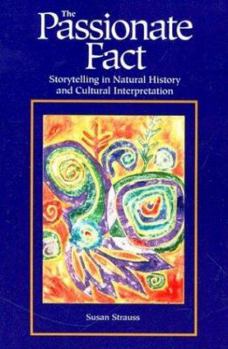Passionate Fact: Storytelling in Natural History and Cultural Interpretation
Select Format
Select Condition 
Book Overview
This handbook on storytelling techniques is loaded with creative ideas for science and natural history educators and interpreters. Story examples, photos, and tips inspire and instruct. This description may be from another edition of this product.
Format:Paperback
Language:English
ISBN:1555919251
ISBN13:9781555919252
Release Date:May 1996
Publisher:Fulcrum Publishing
Length:160 Pages
Weight:0.60 lbs.
Dimensions:0.5" x 6.0" x 9.0"
Customer Reviews
1 rating
reliable wisdom on storytelling
Published by Thriftbooks.com User , 20 years ago
This book is a bit of a crash course in storytelling itself and in addition explains how to effectively add information to a story.After reading this book I spoke to five storytellers on the subject of telling stories with environmental themes. I was surprised to discover that all of these storytellers and the author if this book had come to the same conclusions. Most of them did not have formal training but only leraned through experience. Yet they all agreed on what a story is, what it can do, why a story is so useful, and how it can and cannot be used. This book nicely packaged these ideas together.The goal of storytelling is to create a connection between the teller and the audience, and then the audience to the material being interpreted. You can't predict how they're going to react, and you should not try to force a moral upon them. Stories are beautiful because the listener has just enough room to imagine, and make the story relevent to themselves. Their ability to think should be respected so they can come up with their own morals, even if it's not what you intended.So a story is not meant to directly give out information, messages, and morals, but it is useful in making a personal connection to the material, showing the audience why it is relevant to them. Stories can be immensely useful in interpretation, and this book provides a lot of good advice.She has a very friendly writing style. She has many lovely stories in this book. And she is very quoteable.





